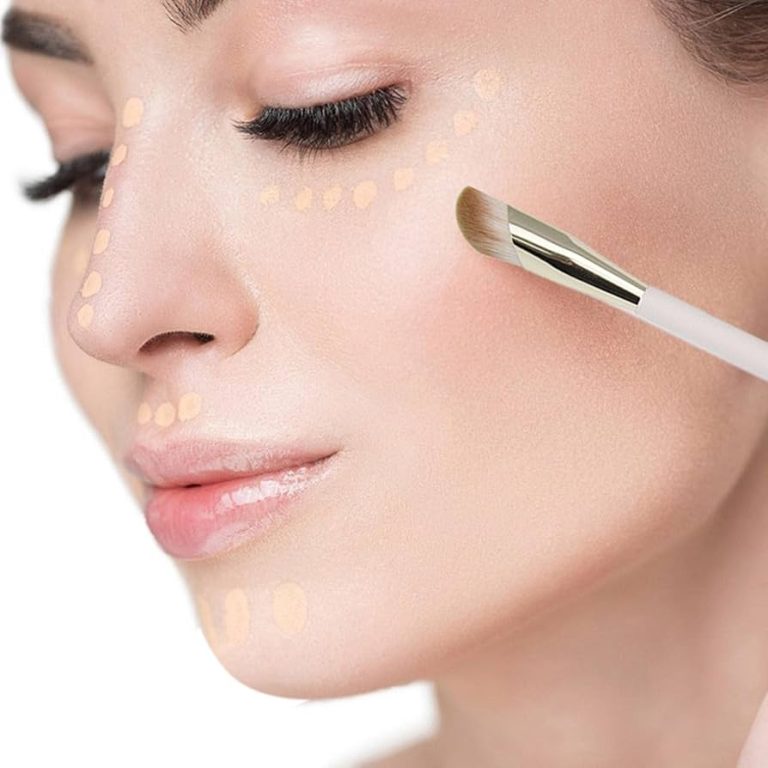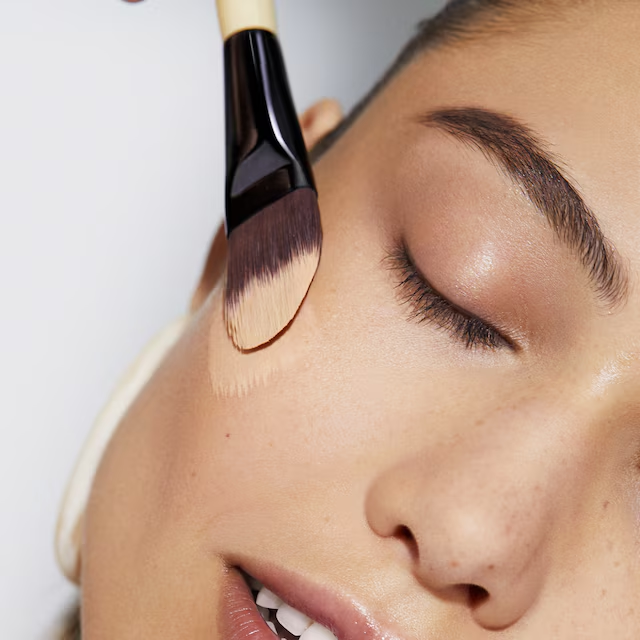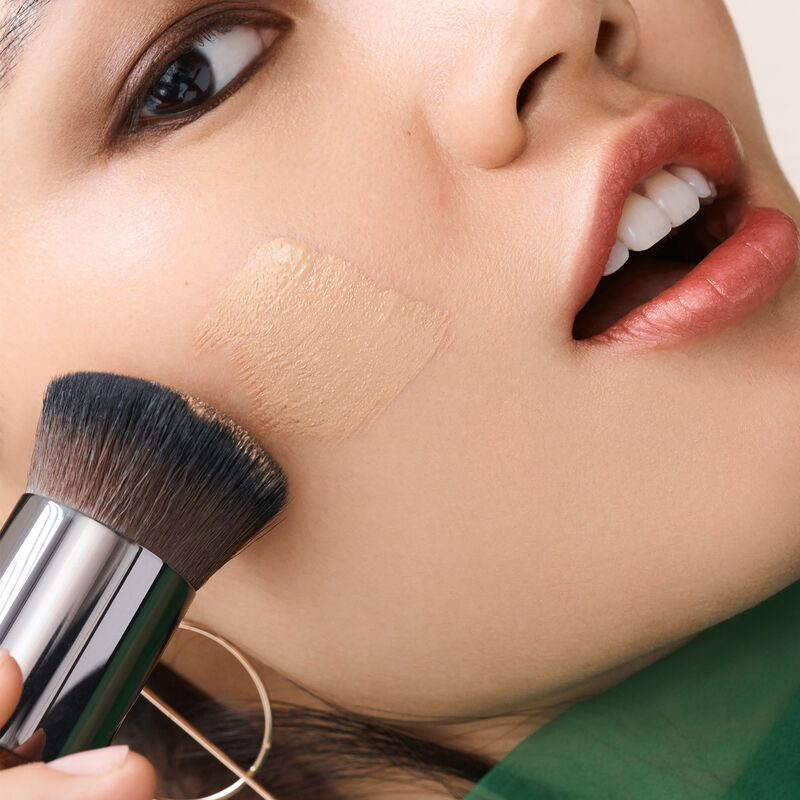
The Future of Flawless Makeup: Buffing Foundation Brush Tips
The Importance of a Good Foundation Brush in Makeup Application
Makeup artists know that a high-quality foundation brush is key. It’s the tool that blends foundation seamlessly. The right buffing foundation brush means no streaks or lines. It can make a huge difference. With a decent brush, foundation looks like second skin, not makeup. A poor tool, however, can leave a cakey, uneven appearance. That’s not what we want.
Using a buffing foundation brush, makeup adheres better to the skin. It gives a natural, airbrushed finish. That’s because good brushes distribute product evenly. They don’t soak up too much product either. This saves foundation and ensures a smooth application. With gentle, circular motions, brushes can buff the product into the skin beautifully.
The bristles play a big role too. Quality brushes have soft, dense bristles. They feel good on the skin and don’t irritate it. Plus, they’re durable. They should not shed during application. Investing in a good buffing foundation brush can elevate your makeup game. It ensures even, full coverage and a flawless finish every time. With such a brush, one can achieve professional results at home.
In essence, the importance of a good foundation brush is undeniable. It’s an essential tool for anyone who yearns for that perfect canvas. A wise choice in buffing foundation brush sets the stage for impeccable results.
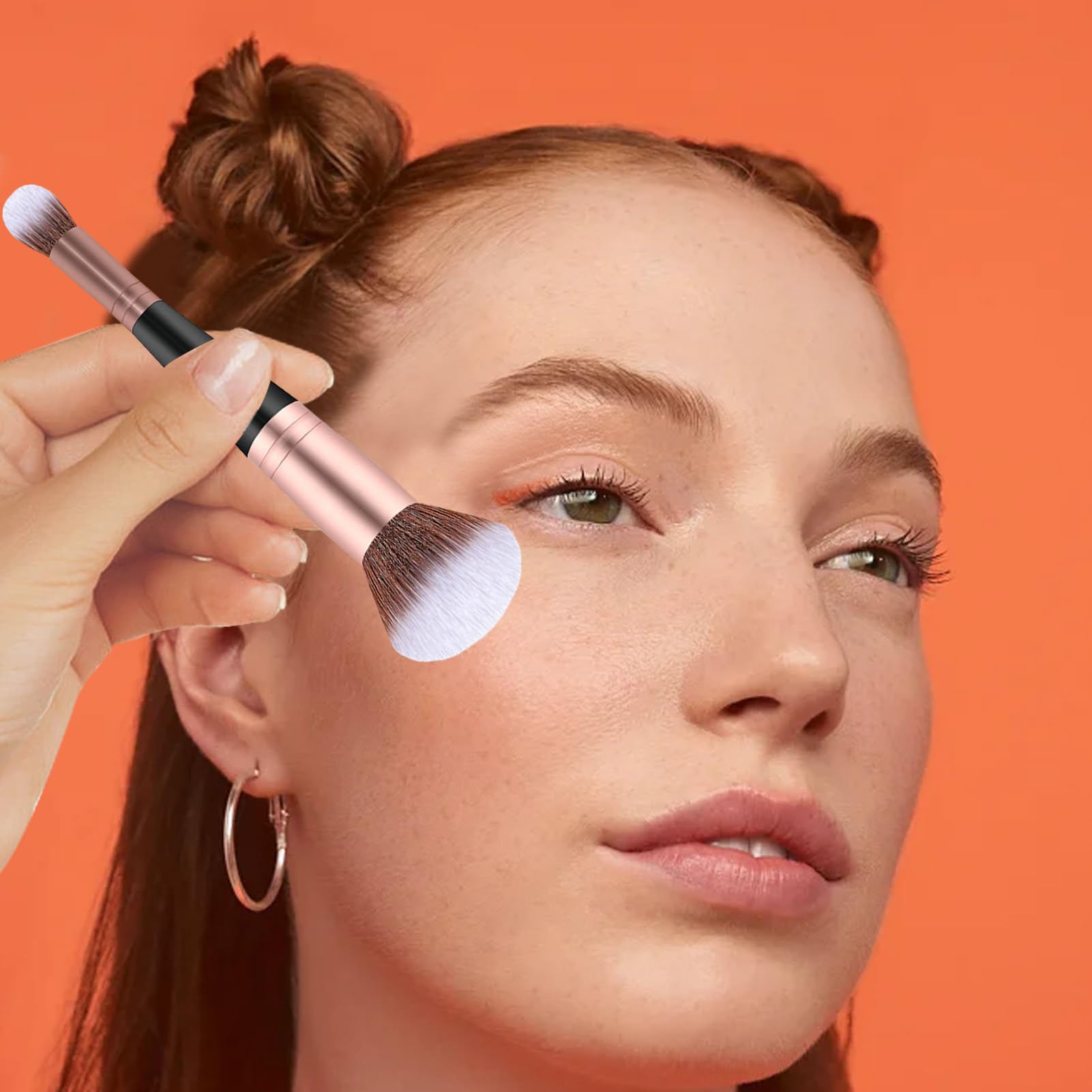
Choosing the Right Buffing Brush for Your Skin Type
Selecting the right buffing foundation brush is vital for your skin’s health and appearance. Skin type determines the best brush. Each type has a unique need. Let’s break it down.
Oily Skin
Oily skin types shine more. They need brushes that offer control. Look for synthetic bristles. These pick up less product and spread it evenly. This helps prevent excess oil.
Dry Skin
Dry skin needs a gentle touch. Brushes with natural, soft bristles work best. They ensure a smooth application. Plus, they won’t irritate flaky areas.
Combination Skin
Dealing with oily and dry patches? Combination skin is tricky. Dual-fiber brushes might be your answer. They handle different textures well.
Sensitive Skin
Sensitive skin demands care. Ultra-soft, hypoallergenic bristles are key. They’re less likely to cause reactions. Avoid firm brushes. Soft pressure is crucial here.
Normal Skin
Those with normal skin are lucky. Most brushes will suit you. Still, quality matters. Choose high-quality bristles for lasting results.Remember, the fit between brush and skin type is like key and lock. Only the right match will unlock flawless makeup. Don’t underestimate the power of the correct buffing foundation brush. It’s a game changer for your makeup routine.
How to Use a Buffing Foundation Brush for Seamless Coverage
Achieving seamless coverage with a buffing foundation brush is an art. Here are some step-by-step tips to master it.
Prepare Your Skin
Start with clean, moisturized skin. Foundation adheres and blends better on hydrated skin.
Dot Foundation on Face
Dot your foundation on the forehead, cheeks, nose, and chin. Use a small amount to avoid caking.
Begin Buffing
Using the buffing brush, start in the center of your face. Gently buff in circular motions.
Blend Outward
Move the brush outward toward your hairline and jaw. Ensure you blend well for a natural finish.
Layer for Coverage
Need more coverage? Apply another thin layer. Buff each layer before adding more.
Cover Blemishes
Use a concealer brush for blemishes. Then, go over with your buffing brush to blend.
Set with Powder
If needed, set your foundation with powder. Use a light touch to maintain the seamless effect.Remember, the key to seamless coverage is to blend, blend, blend. And choosing the right buffing foundation brush for your skin type is essential, as discussed earlier. With these steps and some practice, you’ll get a flawless look every time.
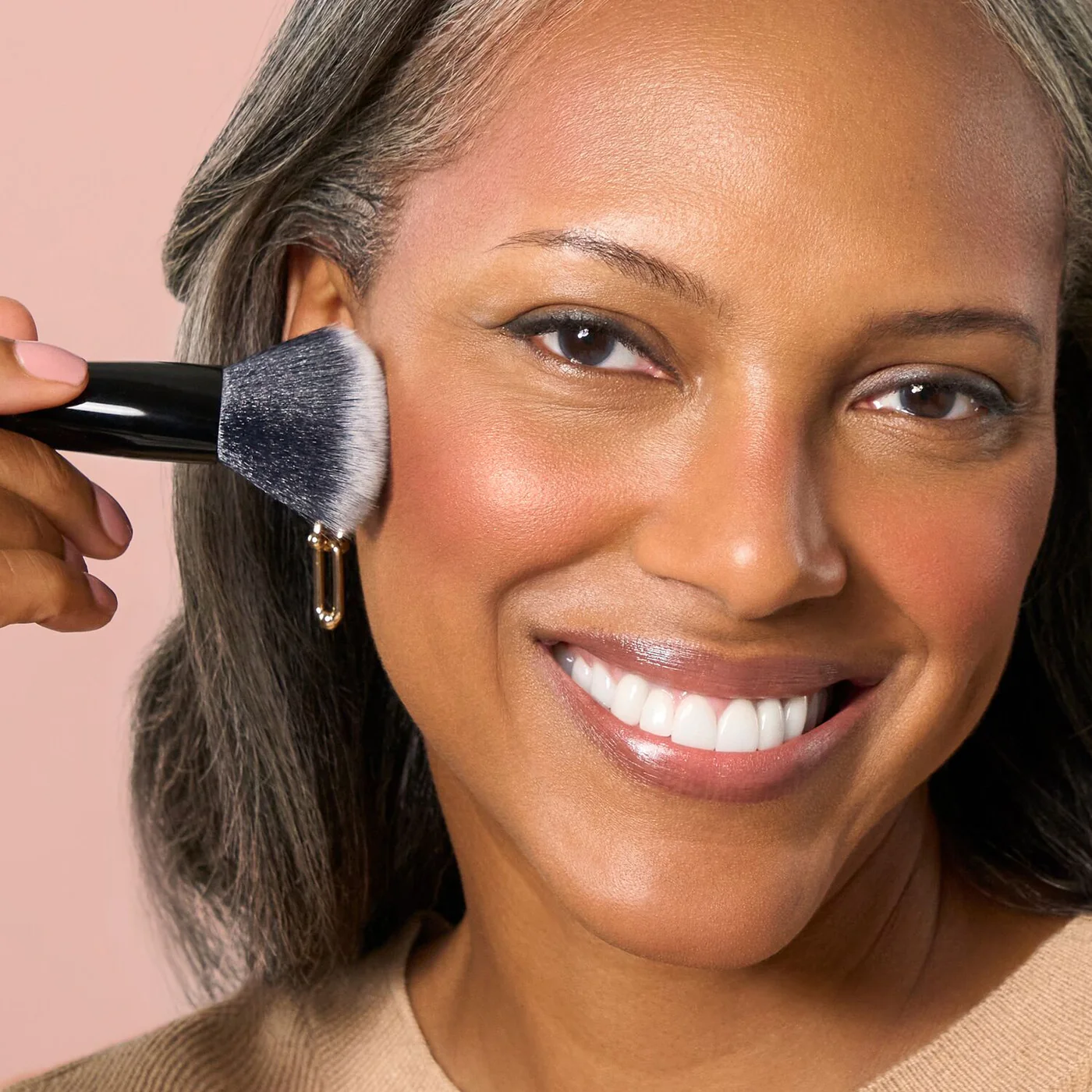
Cleaning and Maintenance Tips for Your Buffing Brush
Keeping your buffing foundation brush in top shape is vital for flawless makeup application. Here are some effective tips to care for your brush:
- Wash Regularly: Clean your brush at least once a week. This prevents product build-up and bacteria growth.
- Use Gentle Soap: Opt for a mild shampoo or a specialized brush cleaner. Harsh soaps can damage the bristles.
- Warm Water Rinse: Rinse your brush under lukewarm water. Hot water may harm the bristles and loosen the glue.
- Swirl and Lather: Gently swirl the brush on your palm with soap. This helps to remove trapped makeup.
- Rinse Thoroughly: Ensure all soap is washed out. Leftover residue can cause skin irritation.
- Squeeze Out Excess Water: Do this gently to avoid reshaping the bristles. Never twist or pull the bristles.
- Air Dry: Lay your brush flat on a towel. Let it dry naturally. Never use a hair dryer as it can be too harsh.
- Keep It Shaped: While drying, reshape the brush to its original form. This helps maintain the brush’s efficacy.
- Storage Matters: Store your brush in a dry, clean place. Keep it away from dust and dirt.
With proper care, your buffing foundation brush can last a long time. Regular maintenance ensures optimal performance and hygiene. Make brush cleaning a part of your beauty routine for the best results.
Top Rated Buffing Foundation Brushes on the Market
When searching for the best buffing foundation brush, it’s vital to look at top-rated options. Here’s a concise guide to some of the most praised brushes out there.
- The Luxury Pick: A premium brush known for its plush bristles and ergonomic design.
- The Drugstore Gem: An affordable find that doesn’t compromise on quality, perfect for everyday use.
- The Professional’s Choice: Favoured by makeup artists for its precision and longevity.
- The Eco-Friendly Option: Made with sustainable materials, this brush combines eco-consciousness with beauty.
- The Travel-Essential: Compact and easy to carry, it ensures you look flawless on the go.
These brushes stand out for their ability to provide a smooth, even application. They cater to different needs and preferences, ensuring there’s a perfect brush for everyone. Each has dense, soft bristles that don’t shed, which is key for both comfort and performance. Remember to consider your skin type and makeup goals when choosing a brush. Whether you want luxury or affordability, precision or ease of travel, there’s a top-rated brush designed for your flawless makeup application.
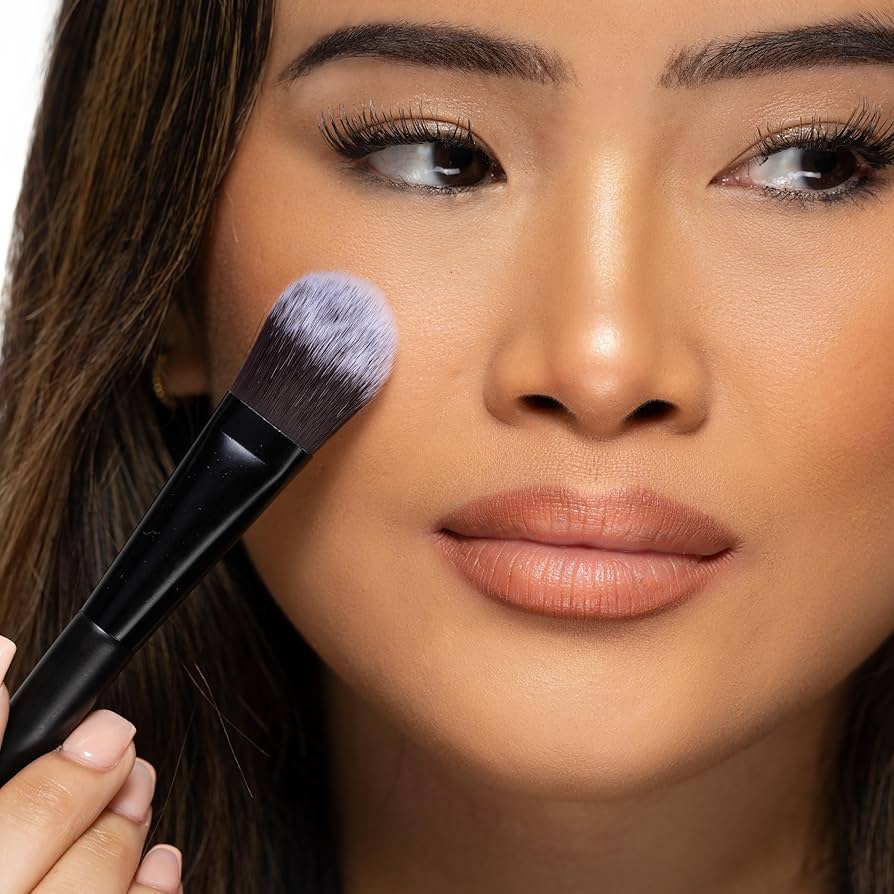
Innovations in Foundation Brushes: What’s Next for Buffing Brushes?
The world of makeup tools is always evolving. Buffing foundation brushes are no exception. Innovators are constantly seeking ways to improve how we apply foundation. The future promises more advanced brushes. These will help us achieve that flawless look with less effort.
One trend is in the materials. Future brushes may feature even more advanced synthetic bristles. These will mimic the softness and spreadability of natural ones. Yet, they will be more durable and less likely to harbor bacteria.
New designs are also on the horizon. Ergonomic shapes that fit better in the hand, ensuring comfortable and efficient application. Brushes may also come with adjustable heads. They will adapt to the contours of the face for a more precise coverage.
We can expect to see smarter brushes too. Imagine brushes with build-in technology that blends foundation automatically. Some might even measure the amount of product needed. This makes for an easier and more economic application.
Sustainability is also key. The beauty industry is moving towards eco-friendly products. We’ll likely see more brushes made of renewable materials. Packaging will become more recyclable or biodegradable. Everyone will make more environmentally conscious choices.
In summary, the future of buffing foundation brushes is bright. Look for better materials, smarter designs, advanced features, and a nod to sustainability. Keep an eye out for the next big thing that could revolutionize your makeup routine.

Buffing Brush Technique: Tricks for a Professional Makeup Finish
To achieve a professional makeup look, perfecting your buffing brush technique is essential. Here are some tricks to help you master the art of foundation application using a buffing foundation brush.
- Use the Right Amount of Product: Start with a small amount of foundation to avoid a heavy, cakey look. You can always build up coverage.
- Warm Up Your Brush: Swipe the brush back and forth on your hand. This warms up the bristles, making them softer and easier to use.
- Buff in Light Layers: Apply the foundation in thin layers, buffing each layer before adding another. This ensures a smoother finish.
- Keep Movements Light and Circular: Use gentle, circular motions to avoid streaking and create a more even blend across the skin.
- Focus on Difficult Areas: Spend extra time buffing around the nose and under the eyes. These areas often need more attention to prevent creasing.
- Use a Tapping Motion for Extra Coverage: To cover imperfections, tap the brush instead of buffing. This provides more concentrated coverage.
- Finish with a Setting Spray: A light mist of setting spray can help blend and set the makeup for longer-lasting wear.
By following these techniques, your buffing foundation brush can help you achieve a seamless, airbrushed finish that looks professionally done. Remember, the key is to be gentle and build coverage gradually for the most flawless result.
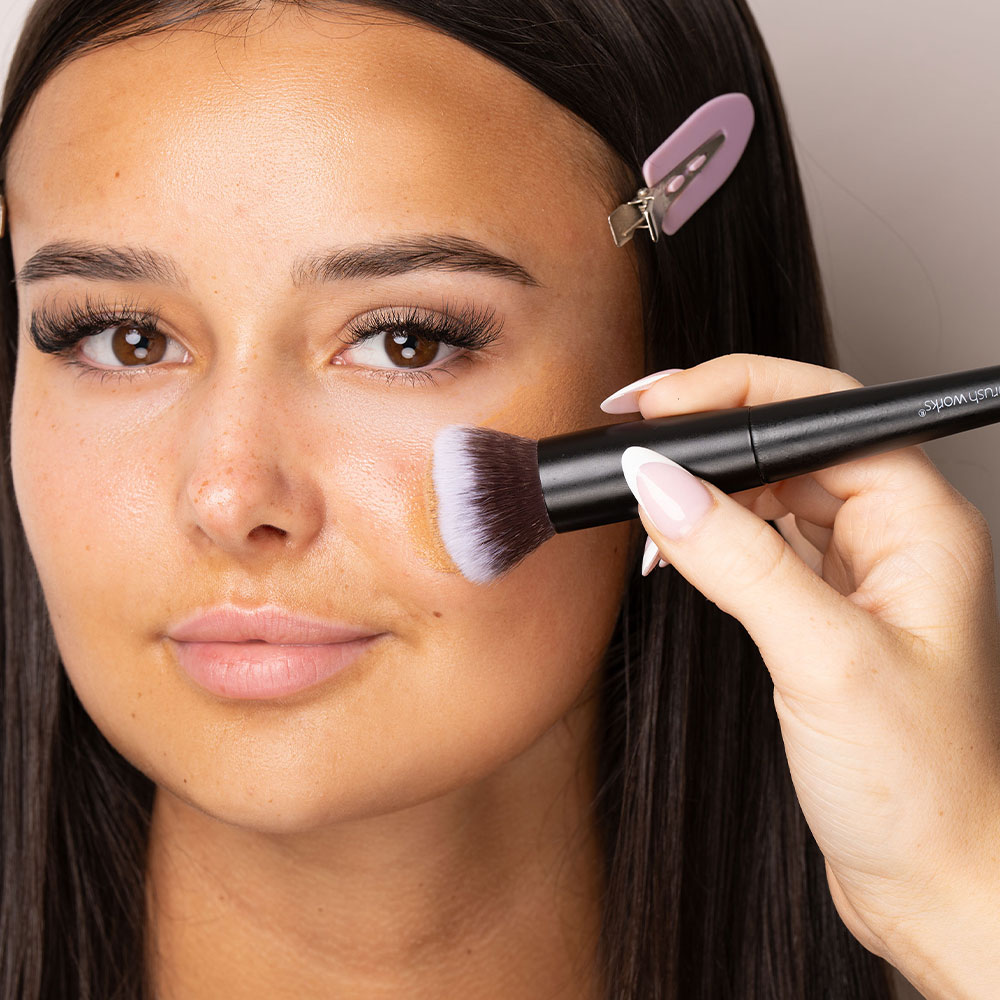
Buffing vs. Stippling Brushes: Understanding the Differences
When applying foundation, two popular tools are the buffing foundation brush and the stippling brush. Each has a unique method of application which leads to different finishes on the skin.
Buffing Foundation Brushes
Buffing brushes, designed for a polished look, use circular motions to blend foundation seamlessly. They typically have dense, soft bristles perfect for a smooth, even coverage. When you use this type of brush, it works best to start with a little product and build up if necessary.
Stippling Brushes
Stippling brushes, on the other hand, have a two-level bristle design. They are known for creating an airbrushed, light finish. To use, you ‘stipple’ or dot the foundation onto the skin and then gently blend. This technique is great for lighter coverage and avoiding cakey results.
Key Differences
- Technique: Buffing brushes blend with circular motions, while stippling brushes use a dabbing action.
- Coverage: Buffing brushes typically offer fuller coverage; stippling brushes are better for sheer, lightweight coverage.
- Bristle Density: Buffing brushes have dense bristles; stippling brushes feature a dual-fiber bristle structure for lighter, feathery strokes.
- Finish: Use a buffing brush for a more polished finish, and a stippling brush for an airy, flawless touch.
Choosing between a buffing and a stippling brush boils down to your preferred foundation coverage and finish. Those who love fuller coverage might prefer the blending power of a buffing foundation brush. For fans of a more natural, lightweight feel, the stippling brush might be the go-to tool. Both can help achieve professional looking results, so it’s useful to experiment to find what works best for you.
